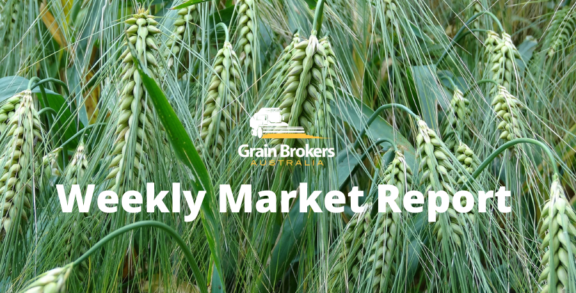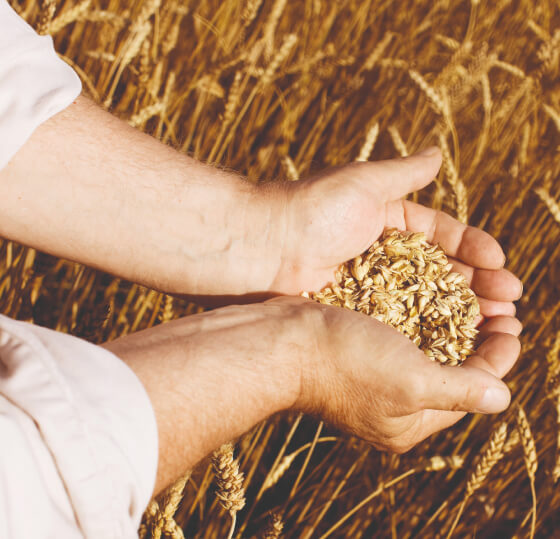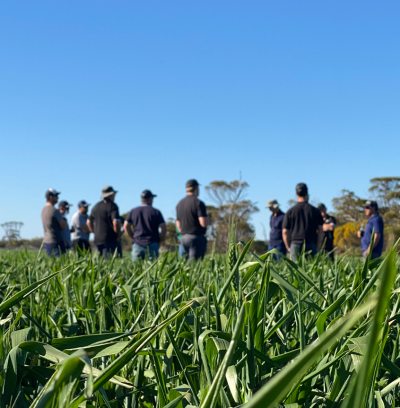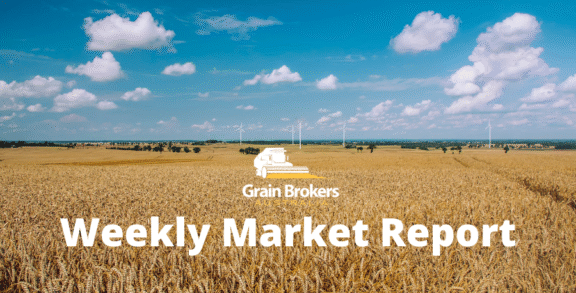
The condition of Russia’s recently planted winter wheat crop was in its worst shape for decades leading up to Christmas, and with the calendar now rolled over to the New Year, the situation is forecast to worsen, particularly in the Southern, Central and Volga regions, with warmer than usual weather forecast for January.
Planting of this season’s winter crops, predominantly wheat and barley, took place in September, October and November, with the area sown estimated at 17.6 million hectares, significantly below the five-year average and down from 18.6Mha in 2023. This is the lowest planted area since 2017 when 17.1Mha was sown to winter crops.
The reduction is primarily attributed to the exceptionally dry autumn weather, although there has reportedly been a swing away from winter wheat to more profitable spring-planted options such as peas, lentils and sunflowers. Winter wheat in Russia generally accounts for around 90 per cent of country’s annual wheat output.
Planting conditions in the autumn were unfavourable across much of the winter cropping belt, with widespread germination failure due to lack of precipitation and a poor soil moisture profile, a common scenario. Autumn rainfall registrations in the Central and Volga districts were generally between 60 and 80 per cent of the long-term average, while in the Southern District, it was generally in the 40 to 60 per cent range. The snow cover was late to arrive, and the crop entered its winter dormancy phase in bad shape. This can result in an elevated risk of winterkill, a reduced crop survival rate over winter, and ultimately lower production come harvest later this year.
In mid-December, 37.2 per cent of the winter wheat area was reported to be in poor condition, the highest level in the past 20 years. This compares to just 4 per cent at the same time in 2023, and an average of 7.3 per cent over the last five years. Only 31 per cent of the planted wheat crops were rated in good condition, a 23-year low and well down on the 74 per cent rating a year earlier.
The last time Russia’s winter crops were considered so bad going into the winter was in 2020 when around 22 per cent of the wheat area had a poor condition rating in early December. Wheat production in 2021 ultimately finished up at around 75 million metric tonne, the smallest of the past five harvests.
According to Roshydromet, Russia’s state weather agency, snow cover across parts of the Central and Volga districts had reached as much as 30 centimetres by late December, but a cold spell is desperately needed to consolidate the cover and protect the dormant crops. The warmer forecast for January increases the risk of damage to the immature plants due to excessive moisture and a break in their critical dormancy cycle. Continued growth during winter leads to consumption of plant sugars and energy, weakening the seedling and rendering it more susceptible to winterkill.
The situation in the Southern Federal District, home to the nation’s two largest grain-producing regions of Rostov and Krasnodar, is one of very low soil moisture reserves due to ongoing drought. While around 44 per cent of the winter crop area was deemed to be in poor condition in December, with plant germination issues extensive, some minor improvements were observed in the vegetative index late in December, particularly in Krasnodar.
However, spring is the critical period in Russia’s winter crop production cycle. Wheat is a highly resilient plant and can recover from a challenging start to life if it survives the winter and the weather turns favourable when the crops emerge from dormancy.
While Russia’s Institute for Agricultural Market Studies (IKAR) have acknowledged that the winter wheat production outlook remains extremely uncertain and vulnerable, they say it is far too early for undue pessimism. If the winter is kind and spring conditions normal, IKAR believes Russia may produce at least 84MMT of wheat this year, but any winter or spring hiccups could see output drop well below 80MMT, such is the fragility of this season’s crop.
Respected Black Sea analyst SovEcon clipped 3MMT off its new crop harvest estimate just before Christmas to currently stand at 78.7MMT. This is down from 81.9MMT in 2024 and a five-year average of 88.2MMT. The production projection for winter wheat was reduced by 3.6MMT to 50.7MMT due to the “deteriorating crop conditions”.
SovEcon has reduced its harvestable winter wheat area from 15.4Mha to 14.9Mha “amid expectations of higher winterkill losses due to cold weather or ice crust”. The agency has also decreased its average winter wheat yield from 3.5 metric tonne per hectare to 3.4MT/ha. Conversely, SovEcon’s spring wheat production forecast has been increased by 0.6MMT to 27.9MMT, largely driven by a rise in the planted area forecast from 13.0Mha to 13.3Mha.
The smaller crop and an expected tight carryout from the current marketing year have pushed SovEcon’s wheat export estimate 16.7 per cent lower to 36.4MMT in the 2025/26 exporting season. This takes into account the agency’s updated export estimate for 2024/25 of 43.7MMT, down from its November forecast of 44.1MMT. IKAR is holding a more optimistic stance, calling next season’s wheat exports 41MMT, down from its 2024/25 forecast of 43.5MMT. The USDA is due to release its first global supply and demand update for 2025 next week and another downward revision to its 47MMT export estimate is likely after trimming it by just 1MMT in December.
Meanwhile, Russia’s state statistical agency, Rosstat, released the country’s official preliminary production estimates for the 2024 harvest just after Christmas. A total net weight (cleaned) of 124.96MMT of grain and leguminous crops were harvested across the country last year, 82.4MMT or 65.9 per cent of which was wheat. This is 13.8 per cent lower than the 2023 harvest of 144.96MMT when wheat made up 64 per cent of total output at 92.8MMT. Barley production of 16.7MMT was down 20.9 per cent compared to 2023 and corn output fell 20.5 per cent to 13.24MMT.
Russia’s production of major oilseeds in 2024/25 totalled 28.3MMT versus 29.9MMT a season earlier. The sunflower harvest fell by 0.7MMT year-on-year to 16.6MMT, while soybean and rapeseed output increased from 6.8MMT to 7.04MMT and 4.2MMT to 4.7MMT, respectively. The final production estimates will be released once all the data from the country’s late-harvested crops is collated, with some minor revisions expected.
Call your local Grain Brokers Australia representative on 1300 946 544 to discuss your grain marketing needs.
Written by Peter McMeekin.





